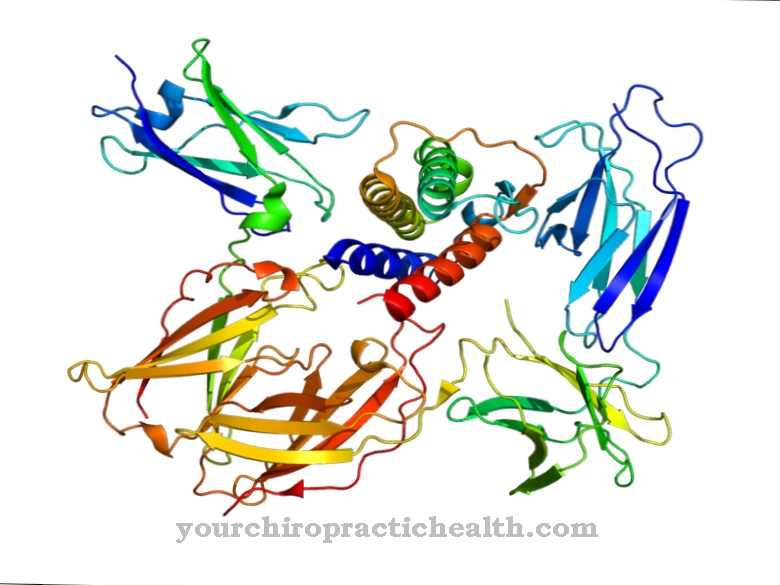"Ask your doctor or pharmacist if there are any risks or side effects." We find this sentence on every drug package insert and often hear it in commercials for over-the-counter drugs. But what about them Side effects of the drugs on itself and how do they have to be declared?
What are side effects?
A side effect is the effect of a drug that can be in addition to the main intended effect. Textbooks often use the term "adverse drug effects" for this purpose.
According to the legal definition, side effects are "unintentional and harmful reactions to a drug". In a broader definition of human drug law, undesirable effects due to medication errors such as incorrect use and overdosing are also to be classified.
Undesirable effects from the misuse of drugs must also be reported to the drug authorities due to drug safety. The side effects listed in the package insert have only been observed when used as intended.
Division & classification
Side effects can initially be divided into drug-typical and dose-dependent as well as dose-independent side effects. The doctor must always weigh up whether the benefit of the drug and the risk of side effects are in an appropriate relationship to one another and whether a drug can be used.
Under certain circumstances, side effects can also lead to desired effects. For example, with some patients certain effects on a disease are quite desirable, while with other patients they have the opposite effect.
A classification is also made into unpredictable side effects (have not been observed to date and therefore could not be described) and serious side effects (life-threatening or fatal, usually require inpatient treatment, can lead to permanent disability).
Special obligations regarding documentation and reporting apply to these side effects. The side effects are further classified according to their frequency as very common (more than one treated patient in ten), common (one to ten treated patients in 100), occasional (one to ten treated patients in 1,000), rare (one to ten treated patients) Patients in 10,000) and very rarely (less than one patient in 10,000 treated).
There is also the classification "not known", for which the frequency cannot be estimated based on the available data.
How must drugs be declared with regard to side effects?
In connection with drug safety, pharmaceutical companies are not only obliged to collect and evaluate all known side effects, but must also state them in the summary of the characteristics of the drug (product information) and in the package insert. The causality is irrelevant. In accordance with Section 84 of the German Medicines Act (AMG), the manufacturer of a drug is liable for all side effects not listed in the product information.
However, there is also a small "problem" here: The question that arises again and again is how a drug with obviously massive side effects and little benefit is even approved for the market. The answer: In addition to control over scientific research, pharmaceutical companies also have control over the test series for new drugs. Thus, clinical tests are designed in such a way that possible dangers are very unlikely to even emerge.
Furthermore, pharmaceutical companies usually determine themselves which of the research results are actually published and forwarded to the regulatory authorities.
Basically, the following applies: As soon as a patient notices an undesirable change during or after using a drug, he should inform his doctor or pharmacist about it. This reports the side effects (even if they are simply suspected) to the Medicines Commission or the responsible federal authority. Unauthorized discontinuation of the drug or a change in the specified dose should not be made by the patient.
Since 2013, side effects can also be reported to the "Federal Institute for Drugs and Medical Devices (BfArM)" via online access. Patients can also find out about the risks of drugs here.
Patients should not only consider possible side effects. Interactions with other drugs or even food should always be considered.
It is often difficult for patients: they are spoiled for choice. Either they suffer from their disease until it is cured without medication or they accept the side effects. Patients can be critical when it comes to medicines. Even when they hear the argument that "side effects would really only occur in a very few cases". Every patient should keep in mind that the following motto applies in conventional medicine: "No effectiveness without side effects".
Risks and side effects for patients
Older people in particular should be careful about side effects. Because of their age, they are more likely to suffer from chronic diseases and require medication for them. However, according to scientists, the susceptibility to side effects increases with age.
Basically, side effects can be very diverse: everything is possible, from harmless side effects such as tiredness to harmful effects, which sometimes significantly exceed the benefit. For example, certain drugs that are taken during pregnancy, for example, can cause severe malformations in the embryo (Contergan catastrophe from the 1960s).
In the worst case, it can lead to life-threatening or even fatal side effects. It can now be assumed that every second death from adverse drug reactions could be avoided. It is estimated that around 200,000 people die each year in the EU from drug side effects. For this reason, the European Parliament passed a resolution to improve patient information back in 2010.
But the side effects also have other consequences: It can currently be assumed that around five percent of the drug-treated patients experience side effects. Also in about three to six patients who are admitted to an internal medicine ward, a side effect should be the reason for admission. But not only the patients suffer from the side effects. The supply system is economically burdened: The costs for side effect-related treatments are between five and nine percent of the total hospital costs.
It can also be observed more and more that drugs with many side effects are causing long-term patients. So, despite all the risks, medication is often prescribed, which in turn requires certain concomitant medication and therefore often also require check-ups. The patient therefore has to visit the doctor again and again at certain intervals to prevent further problems.
With regard to the side effects that occur especially in older people, under the direction of Prof. Dr. Petra A. Thürmann from the Department of Clinical Pharmacology at the University of Witten / Herdecke launched the "PRISCUS List" project. The list is intended to help physicians to find a suitable alternative medication to "potentially inadequate medication", especially in older patients.
The list contains 83 medicinal substances, which are mainly prescribed for older people, but should not. Doctors can find a corresponding alternative preparation in the "PRISCUS list". The list also contains information on contraindications. It is intended to help reduce the number of prescriptions that are harmful to health. It should be noted, however, that the list only shows the most common drugs and that the alternative substances are not entirely free from side effects.





















.jpg)
.jpg)




